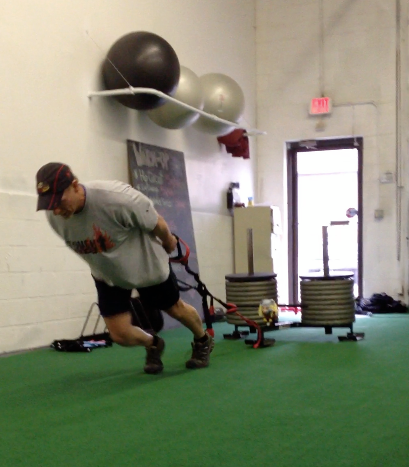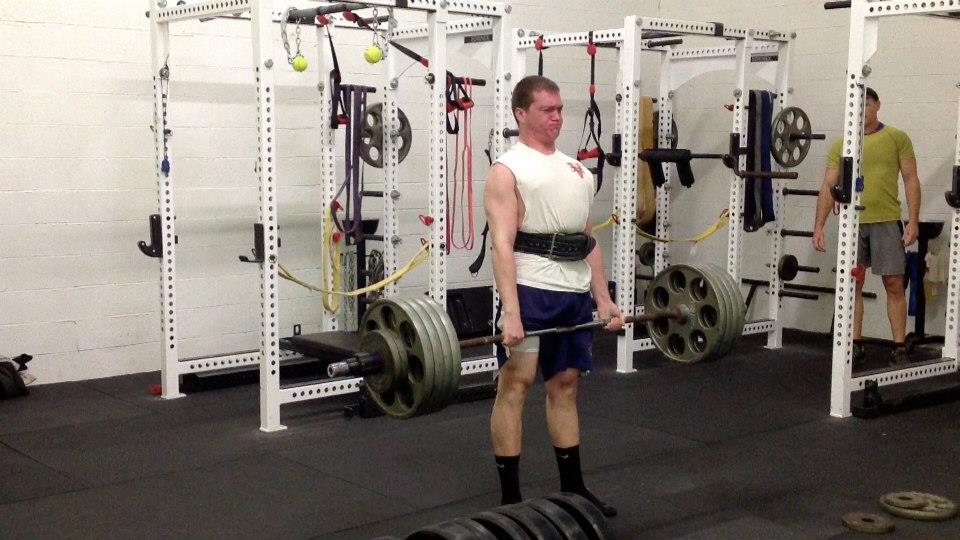Q: Hey Steve, I came across your post on HICT with step-ups, and I was wondering if you could answer some questions I have. I am 25-year old recreational athlete trying to improve my conditioning, mainly for basketball. 1. How do you use this type of training within a program? How many times per week? Do you use it in concert with other methods of conditioning as well? And do you perform this work separate from any other training, or before/after a strength session?
2. You mentioned doing HICT via a spin bike rather than step-ups, and I have seen Joel Jamieson and Mark McLaughlin also mention this. Do you use both methods, and if so, for what purposes would you choose one over the other? What are the differences?
Thank you in advance for any answers you may have. I am new to your site and look forward to exploring it more, keep up the good work.
(Note from Steve: For those unfamiliar with HICT step-ups, it is a conditioning protocol, probably invented by Satan, in which you load up your back with an extremely heavy weight vest or backpack and do step-ups for sets of 10-20 minutes at a time. Because of the high resistance yet long duration, it develops the oxidative capacity of the fast twitch muscle fibers. Brutal yet certainly effective.)
A: Good questions! With regards to Question #1, the answer is - as typical within the sphere of strength and conditioning - "it depends." Let's break down each of your subquestions one by one:
How do you use this type of training within a program?
It depends on where the athlete currently stands with regards to his or her schedule, external stressors (ex. how many times a week is he/she practicing or competing), internal stressors (Girlfriend just break up with them? In depression because no one "Liked" their recent Facebook status?), what their physical condition looks like, and their goals. Are they currently inseason or offseason, what other "qualities" do they need to work on; for example, do they currently need to improve strength or power output? How many days a week do they have to train? Can they train 2x/day on some days but not at all on others? Answers to all the above questions will affect how to employ HICT within the program!
To simplify things a bit: If your PRIMARY goal is to improve aerobic conditioning, then you should prioritize something like HICT in your weekly training structure. Here are four different ways I recommend setting it up, depending on your schedule:
Option 1 (two-a-day workouts) - Strength or power work in the AM, and then HICT in the PM
Option 2 - HICT as a standalone training session
Option 3 - Sport practice immediately followed by HICT. The HICT would act as a pseudo "active recovery" and restorative tactic.
Option 4 - HICT and strength training in the same session. HICT would go first because your priority is aerobic conditioning. (Note: If you're someone who has a lot of strength and power to gain, you would train those qualities FIRST in the session.)
How many times per week?
One to two times per week. Begin with 1x/week, assess tolerance and recovery, and gradually increase the frequency to 2x/week.
Do you use it in concert with other methods of conditioning as well?
Yes, absolutely! While you certainly don't want to utilize everything and anything at the same time, something like HICT can certainly complement other conditioning modalities such as running or cardiac output circuits*.
To truly develop one's aerobic system, it takes more than just one or two haphazard sessions per week, or deciding to just "throw in" 10-20 minutes of aerobic training at the end of a resistance training session. I'd ensure you're undergoing some form of aerobic training 4-6 days a week, provided you remain prudent with the modalities and intensities you implement, of course.
However, don't neglect the fact that just playing basketball is aerobic training in nature! Thus, your pick-up games and competition games must be accounted for when analyzing your total volume of training in a given week.
*Note: These are actually one of my favorite methods of developing the aerobic energy system during the initial phases of training and/or during periods in which one has many competing demands outside the gym walls, as the risk of overreaching is extremely low.
And do you perform this work separate from any other training, or before/after a strength session?
While I touched on this a bit during the answer to your first question, let's expound a bit further here. The research is actually a bit mixed with regards to "mixing" aerobic training and strength training in the same session:
- This meta-analysis by Wilson et al. (2012) showed a loss in power when endurance training was trained concurrently with strength training, but no decline in VO2max when the endurance+strength group was compared to the endurance-only group.
- This paper by Want et al. (2011) concluded that endurance training immediately followed by strength training actually INCREASED mitochondrial growth compared to endurance-only training. (Mitochondrial growth will augment the muscles' oxidative capacity, thus improving one's endurance.)
- This paper by Hawley showed that conditioning before strength training blunts the anabolic effect of strength training, while conditioning after strength traning leads to greater amounts of inflammation and protein degradation.
(Note: Credit to Patrick Ward for pointing a couple of those out.)
While I obviously don't prefer to allow solely on research to dictate what I do and do not do with my athletes - after all, most research subjects are woefully untrained, along with the fact that many of the research protocols (ex. machine leg extensions for the "strength" exercise) are a far cry from what I use in the real world - it certainly still helps things to take a look at what goes on at the molecular level with human physiology.
So, what to do? Personally, I think it's ideal to separate the strength and endurance sessions completely - either by 8 hours or 24 hours - but this assumes that you have nearly every day of the week to train, and are able to fit in these sessions OUTSIDE of your practice and game schedule.
If you can't afford to split up the training sessions, then train FIRST what you want to prioritize, and then scale back the volume and intensity on the other goal. So if your goal is improved aerobic function, then do HICT first and follow it up with low volume strength training; for example, 2-3 exercises for 2-3 sets at 75-80% intensity. If your primary goal is strength, then attack your resistance training and follow that session up with HICT or a cardiac output circuit.
2. You mentioned doing HICT via a spin bike rather than step-ups.....Do you use both methods, and if so, for what purposes would you choose one over the other? What are the differences?
I primarily use step-ups with our athletes, but that is more a function of the fact that we don't have a spin bike in our facility. Not to mention, even if you do have a spin bike, it needs on the higher end of quality (ex. something you'd find in a good spin class) to be capable of cranking up the resistance so high that it's literally impossible to pedal quickly; you won't typically find these bikes sitting out in the cardio sections of gyms.
Here's a brief listing of the pros and cons of each:
Spin Bike
Pros - Less eccentric stress than a step-up, so theoretically less muscle soreness during the days following the HICT session; this also means a spin bike would probably be better suited for an active recovery and restorative tool compared to step-ups. No weight vest or heavy backpack required.
Cons - Requires access to a good spin bike. The "hunched" over position of biking forces a more flexed posture in general during the entire set: Kyphotic t-spine, shortened hip flexors, internal rotation of the shoulders, no hip extension achieved at any point (bad for glute function).
Step-Ups
Pros - No spin bike required. Achieve way more glute recruitment than on a bike, due to the glutes driving you up all the way to full hip extension at the top. Is much more of a total body workout than a spin bike as the bike will pretty much only hit the quads, but the step-ups will hammer the glutes, hamstrings, quads, not to mention the upper back+traps will be blasted during the weighted step-ups as these muscle groups have work like crazy to hold the weight vest or backpack in place.
Cons - More eccentric loading on the knees/legs when compared to a bike, so need to be more careful about where you fit them (step-ups) into the training week. Possibly worse for those with knee pain issues. Requires a heavy weight vest or large, heavy backpack.
Hope this helps! There is no doubt that HICT is certainly effective, but caution must be adhered to when planning and progressing it. Start on the low end of frequency and volume, and don't be in a rush to progress too fast too soon.


